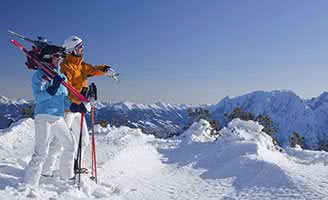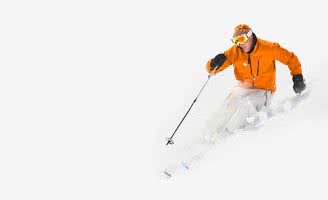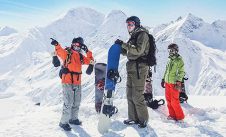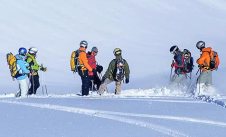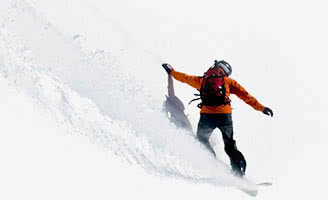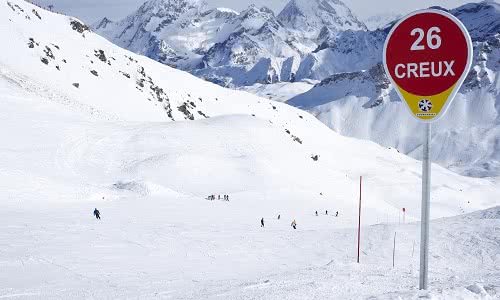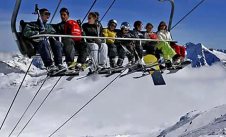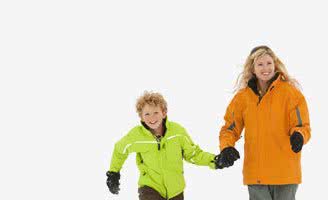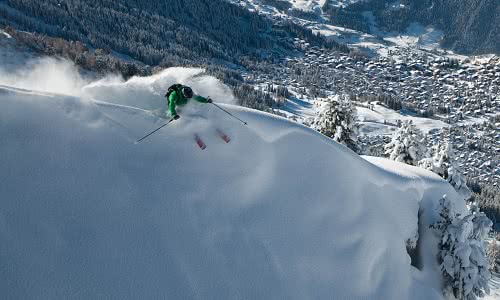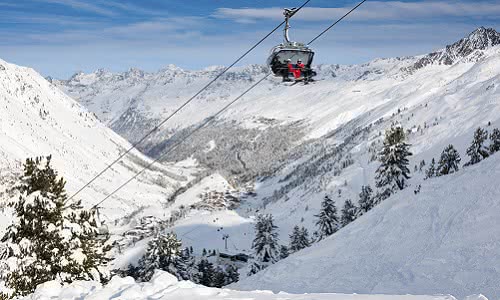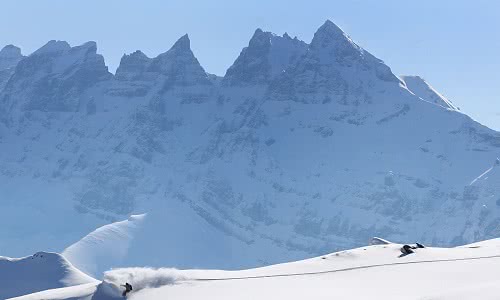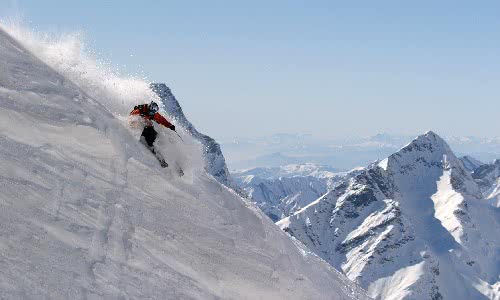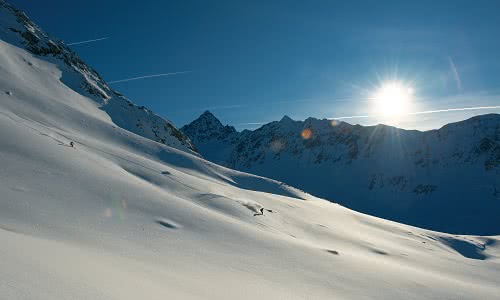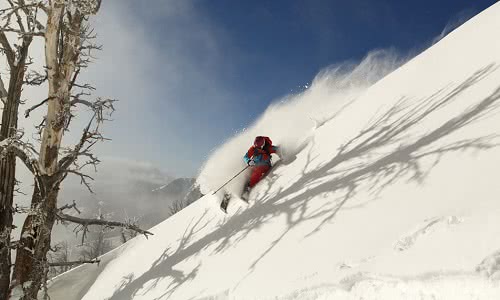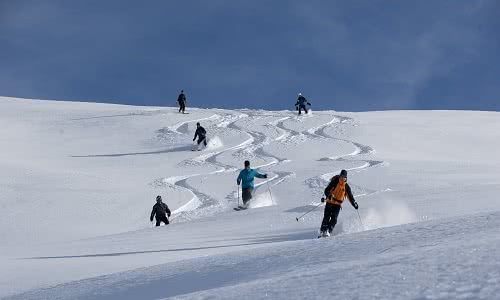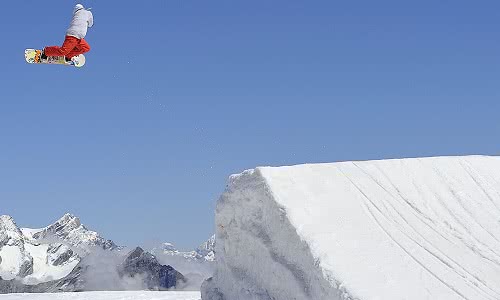Intermediate Ski Holidays
Advice for intermediate skiers & snowboarders from SNO
The term ‘intermediate’ is the broadest of the ski and snowboard levels, used to describe everyone from cautious blue run cruisers to seasoned speedsters. Wherever you are on the intermediate spectrum, this is a massively rewarding stage to be ski or ride at:
You’ve conquered the basics, waved goodbye to nursery slopes and well and truly caught the snow bug - once confidence and technique tweaking give you the go ahead, you’re ready to take your skiing or snowboarding up a level – the world’s your oyster.
with your own travel concierge. Send an enquiry or give us a call, and we'll help
you plan the perfect Intermediate ski holiday
020 7770 6888 ← online or call ↴
020 7770 6888
What is intermediate skiing?
Low intermediate skiing: early intermediate skiers have usually spent a few weeks skiing. They’re confident parallel skiing on blues as well as some reds in good conditions and can control speed using turns (though might revert to snowplough for trickier turns).
Intermediate skiing: intermediate level skiers are rhythmic parallel skiers on blue and red runs who can control speed with turns and make shorter turns. They’re ready to progress onto steeper slopes and experience more challenging conditions.
High intermediate skiing: the most accomplished intermediates are confident on all blues and reds as well as capable on easier black runs. They can ski on and off the side of pistes with ease and are keen to work on carving, skiing steeps, easy off piste, moguls and challenging snow conditions.
What is intermediate snowboarding?
Low intermediate snowboarding: early intermediate riders are confident doing linked toe and heel turns on blue runs and able to increase speed without losing control. They might be keen to try steeper terrain or have a go at freestyle.
Intermediate snowboarding: intermediate snowboarders can use flexing and extending to turn on red runs and are capable on uneven terrain. They can link switch turns on blues and most red runs with a good riding rhythm. In the park, they are working on simple moves and grabs on the green obstacles.
High intermediate snowboarding: advanced intermediates will be able to make sharp turns on all blue and red runs, and have had a go at easy black pistes and powder runs. They will be working on carving and park skills such as 180’s on kickers.
Improver courses
Lessons aren’t just for beginners – there’s a ton to learn even when you’re confidently linking turns on different pistes. Some improver courses work on general techniques to help you refine your all-round skiing or snowboarding, while others focus on specific skills like carving, freestyle or off-piste. Whether it’s a full week of group classes or a one-off private session, it’s worth booking instruction to boost confidence, banish any bad habits and add to your abilities.
How to ski parallel
With parallel skiing, you hold your skis side by side and equidistant to each other.
When traversing a slope in parallel, keep skis a hip-width apart and knees bent. To start a parallel turn, lean forwards and straighten up more (but not completely, knees still need to be a little bent). Turn your body slightly down the slope. Bring your hips over the downhill ski and push on the downhill ski, then as you start to turn, balance weight over both skis with the bases flat on the snow. Quickly transfer your weight onto the new downhill ski to bring you facing across the piste. The harder you push on the downhill ski, the quicker you’ll turn.
Intermediate skiing tips
- Take lessons - they’re not just for learning the basics and will ensure you pick up the proper techniques and have experience on more difficult terrain with an instructor at hand before you set off on your own.
- Stick to intermediate terrain - even if you feel confident, don’t try trickier runs until an instructor says you’re ready.
- Don’t lean too far back – balance over the centre of your skis and learn forwards to begin a turn.
- Clock up the miles – the more you ski, the better you become.
- Use your legs to turn – not your torso, which should stay facing downhill.
- Look ahead – not down at your feet, so you can plan your route and prepare for any obstacles.
- Avoid the A-Frame shape - and try to keep skis in parallel at all times.
Intermediate ski areas
The best ski resorts for intermediates are part of big ski areas like the 3 Valleys, Paradiski, Portes du Soleil, Espace Killy or Dolomiti Superski. Here you can really clock up the miles and hone skills on different types of terrain: slopes of different gradients, un-pisted routes, snow parks, bumps and more.
Our favourite resorts have a number of British ski schools, offering group lessons, private tuition and performance clinics to keep you progressing on - and off - the piste.
How to ski on ice
In icy conditions, bend your knees to lower your point of gravity. You might be comfortable also widening your stance. Keep weight over your outside ski to maximise the pressure of its edge allowing it to cut into the snow and grip. Keep a slow, steady pace with round turns as any quick movements will reduce your control. Look for soft patches of snow (often on the edge of the piste or in mounds on the piste) and use these for turning. Use side slipping to descend icy patches, then resume skiing when you find softer areas of snow. If you’re feeling nervous, focus on breathing and use counting (or even singing) to build a rhythm. Avoid tensing your shoulders and don’t lean back. Even if you feel confident and in control, be aware of other skiers who might not be.
Intermediate skiing techniques
- Parallel skiing: keeping skis in parallel throughout your turns.
- Speed control: using the edge of your skis or snowboard to control speed and the size of your turn.
- Linking turns: making turns in succession without stopping.
- Transferring weight: balance on one ski by keeping your weight on the outside/downhill leg.
- Pole planting: using the inner pole as a balance aid, placing it lightly in the snow at the beginning of a turn to help you shift your weight.
- Carving: the next step up from parallel turns, when edges of skis cut into the snow and you slide along edge of ski. This is the fastest way to turn.
- Sidestepping/slipping: used to get over icy sections of a slope.
Which are the best intermediate ski holidays?
| Accommodation | Resort | Price (per person) from |
|---|---|---|
| Hotel Le Taos | Tignes, France | £819 |
| Four Seasons Whistler | Whistler, Canada | £1188 |
| Chalet Hellebore | La Plagne, France | £1302 |
| Hotel Taj-I Mah | Les Arcs, France | £1909 |
| Hotel Altapura | Val Thorens, France | £2049 |
| Fahrenheit Seven | Courchevel, France | £1865 |
| Chalet Soldanella | Selva, Italy | |
| CLUB Alaska | Morzine, France | |
| Hotel Tennerhof | Kitzbuhel, Austria | |
| Sporthotel Modlinger | Soll, Austria |






